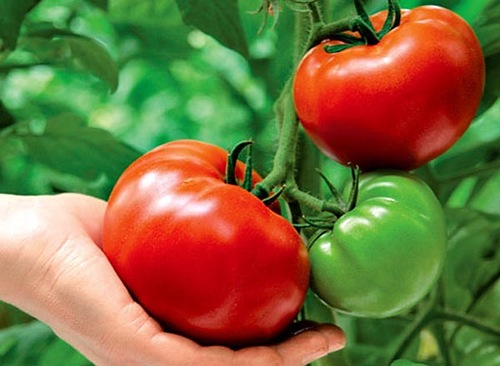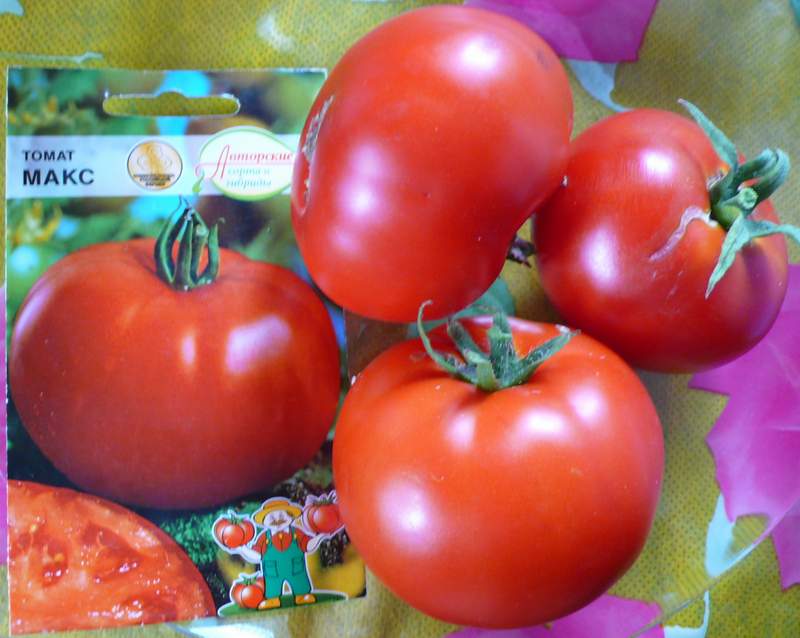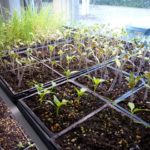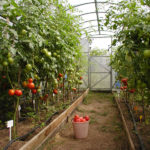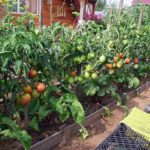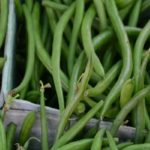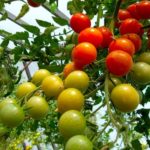Tomato Max is one of the innovative and promising tomato varieties. This variety belongs to determinant non-standard varieties.
The popularity of tomatoes provokes breeders to invent new varieties, more improved and stronger. The Max variety is exactly this variety. The abundance of tomato varieties leads to the fact that consumer tastes are becoming more and more demanding; an ordinary tomato with a very mediocre taste will no longer surprise anyone.
At the present stage of our lives, tomatoes should combine high yield, excellent taste, and ease of care.It is Max who meets all such characteristics.
Characteristics of this variety
In terms of ripening time, this variety belongs to the early varieties of tomatoes. The harvest begins 95-105 days after planting the seeds. The bush is semi-spreading, the foliage is average, the branching is also average. The plant reaches a height of 60-70 cm.
The leaves are medium in size, soft green in color, slightly corrugated.
Simple intermediate inflorescences form on the branches: the first - above 6-7 leaves, the next - after 1-2 leaves.
The fruits have a regular round shape and are slightly flattened. The size of ripe tomatoes reaches 110-120 grams. The color of ripe vegetables is rich red. Each vegetable contains at least 4 chambers. The taste of the fruit is excellent: sweet, fleshy, with a pleasant sourness.
The stated description of the variety indicates the versatility of using tomatoes. They can be consumed fresh and in the form of salads, and can be processed into juice, ketchup, and sauce. They are used stewed and boiled. These tomatoes look great marinated or salted in jars for the winter. The high yield of tomatoes allows them to be used both on an industrial scale and for private use and cultivation in summer cottages.
A characteristic feature of this variety is the different growing methods. The plant can be left without a garter and not pinched. But you can also tie it up and perform stepsoning. If you nevertheless decide to plant tomatoes during the growing season, then as a result you will get much higher yields, larger fruit sizes and earlier ripening.
Benefits of Max tomatoes
This type of tomato has many advantages and disadvantages:
- Versatility in the use of vegetables.
- Versatility in cultivation. The characteristics of the plant indicate the possibility of growing it both in open ground and in a greenhouse.
- Large-fruited tomato and excellent taste.
- High yield of tomatoes: 460-520 c/ha.
- High yield of marketable products: no less than 96%.
- Fruit uniformity and excellent presentable appearance.
- Resistant to cracking.
- Quite long shelf life and excellent transportability of vegetables.
- Easy to care for and able to grow in different regions of our country.
- Excellent cold and drought resistance.
- Reviews from gardeners and summer residents indicate the resistance of this variety to various diseases and pests.
This tomato is included in the State Register of the Russian Federation and is recommended for growing in open soil.
Features of planting and growing
Those who planted this variety of tomato testify to its excellent fruiting in the open ground and in the greenhouse.
Landing
Like most of its relatives, the Max tomato is recommended for growing through seedlings. To do this, you must first plant the seeds. Sow the seeds in separate containers to a depth of 0.5 cm in moist, loose soil. This is done mainly in the second half of March. To speed up the seed germination process, containers can be covered with glass.
Next, you need to put the containers in a warm place and wait for germination. It is necessary to periodically moisten the soil; if desired, it can be fertilized. When the seeds have sprouted and 1-2 true leaves have appeared on them, the seedlings dive into separate pots. This usually happens 18-23 days after planting the seeds.Picked plants also need to be periodically moistened and hardened.
In order for the seedlings to harden and become strong, you need to periodically take them out onto the balcony or outside. At first this is done for an hour or two and gradually increases the time she spends in the fresh air to a whole day.
Important to remember. It is worth leaving seedlings outdoors for a long time only when the threat of night frosts has already passed. Otherwise, the plant may freeze and die.
When the frost has already passed and the seedlings have passed all the necessary stages of hardening, they can be planted in open ground. As a rule, this happens when the seedlings already have 6-7 true leaves.
The plant is planted in open soil in late May - early June. You can safely plant seedlings in the greenhouse in early May.
It is best to dig the holes in a checkerboard pattern at a distance of 50-60 cm from each other. The holes must be watered and organic natural fertilizer added to them. You can do without fertilizer, but with it the plant will grow faster and begin to bear fruit.
Care
Tomatoes are drought-resistant plants. But this does not mean at all that they do not need watering. It is necessary to water tomatoes not too often, but abundantly. Much in this matter depends on weather conditions. If it rains frequently, then watering is not particularly necessary. If rains are a very rare occurrence, then you need to water the tomatoes 1-2 times a week. A drip irrigation system is best suited for these purposes; although it appeared relatively recently in 2015, it has already gained respect among summer residents and gardeners.
Those who grew this variety of tomatoes note their good resistance to various diseases and pests.But still, the Max variety, like most other tomato varieties, is susceptible to such a common disease as late blight. To protect the plant, you need to inspect it regularly, and if you still cannot avoid infection, you must immediately treat the bushes with special preparations that are sold in every specialty store.
To speed up the fruiting process and achieve greater yields, you can fertilize the bushes. Natural fertilizer is perfect for these purposes: chicken droppings or mullein, or universal synthetic fertilizer. Only fertilizing should be done no more than once every three weeks.
When growing tomatoes in greenhouses, you should adhere to the same rules and recommendations as in open ground. Plus, you need to regularly ventilate the greenhouse and maintain a stable air temperature there; it should not exceed 23-25 degrees.
Both in the greenhouse and in open soil, it is necessary to regularly remove weeds and loosen the soil.
The best predecessors of tomatoes are cucumbers, carrots, cabbage, herbs and zucchini.
To plant and grow Max tomatoes, it is not at all necessary to have special wisdom; it is enough to adhere to standard and simple rules and recommendations.


